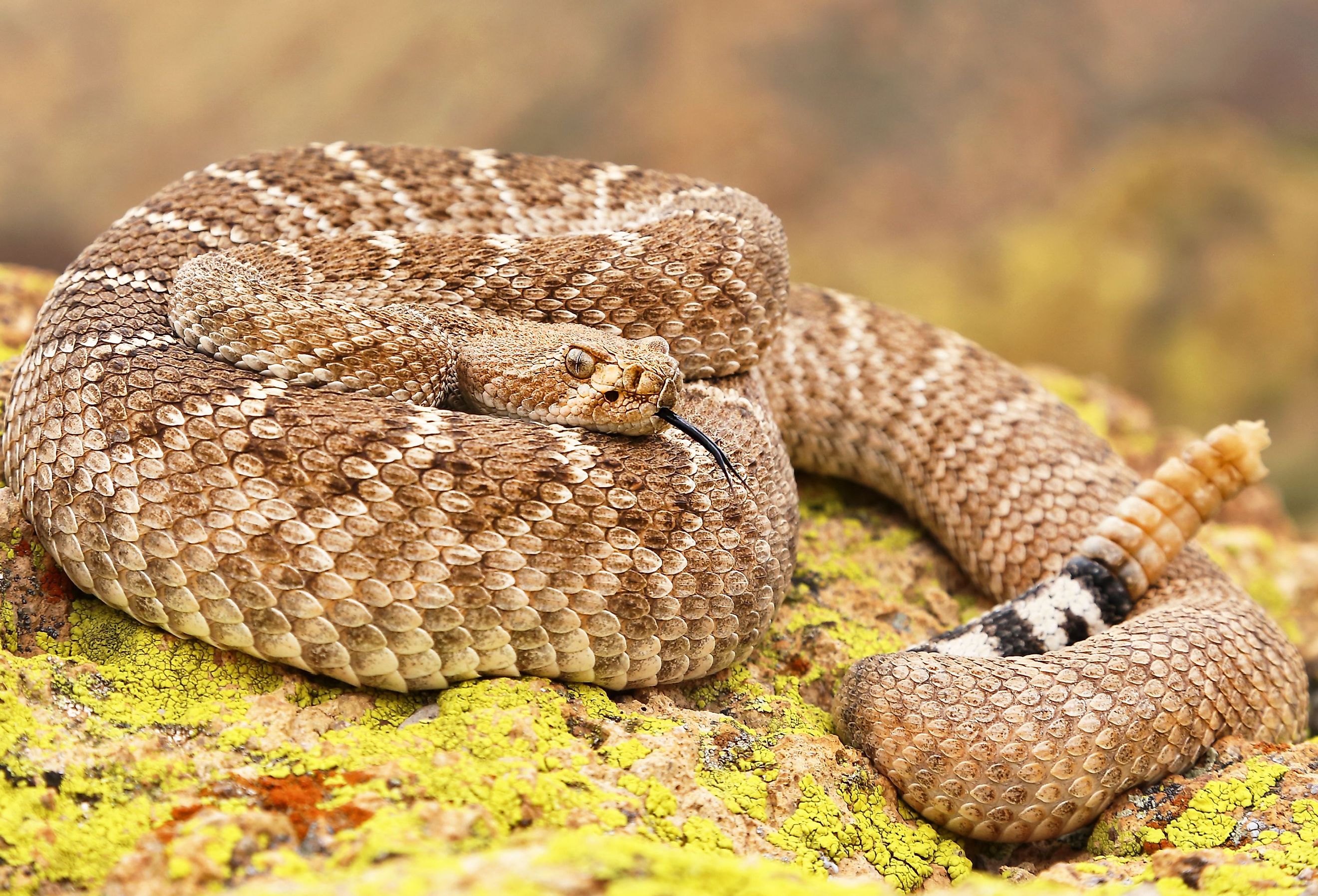
4 Venomous Snake Species Near Lake Mead
Lake Mead is a man-made reservoir located in the southwestern United States, created by the Hoover Dam on the Colorado River. The lake stretches across the border of Nevada and Arizona, providing a picturesque setting for recreational activities such as boating, fishing, and hiking. Visitors also enjoy camping and picnicking in the surrounding desert wilderness. However, it is important to be aware that Lake Mead also serves as a habitat for several venomous snake species that can pose a danger to visitors. This article delves into the characteristics, behavior, and habitat of the four venomous snake species found near Lake Mead: the Western Diamondback Rattlesnake, Mojave Rattlesnake, Sidewinder, and Southwestern Speckled Rattlesnake.
Western Diamondback Rattlesnake
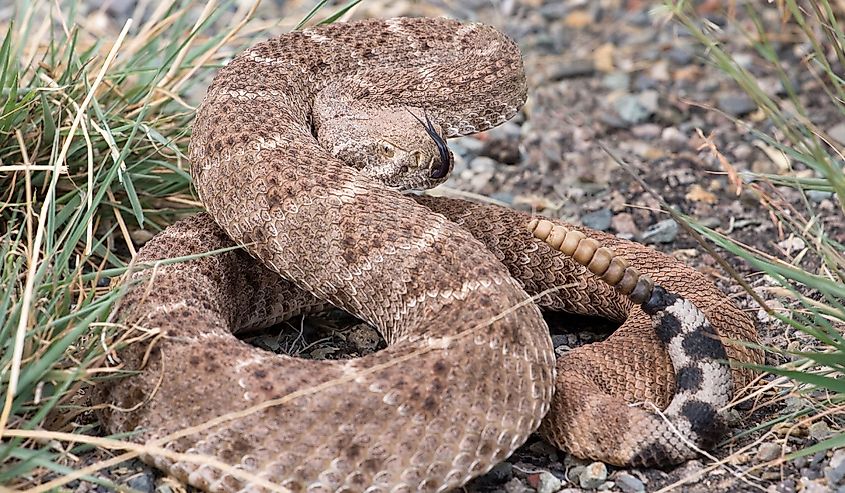
The Western Diamondback Rattlesnake (Crotalus atrox) is one of the most commonly found venomous snakes near Lake Mead. It is typically gray or brown in color with dark diamond-shaped markings down its back and sides. Light yellow or white stripes border these markings, giving this species its name. This snake is infamous for its venomous bite and its loud rattle that serves as a warning to predators and unsuspecting hikers alike. It is also capable of striking at great distances and can strike multiple times in succession if necessary. The venom of the Western Diamondback Rattlesnake is a hemotoxin, which can cause severe tissue damage and can be fatal if left untreated.
Mojave Rattlesnake
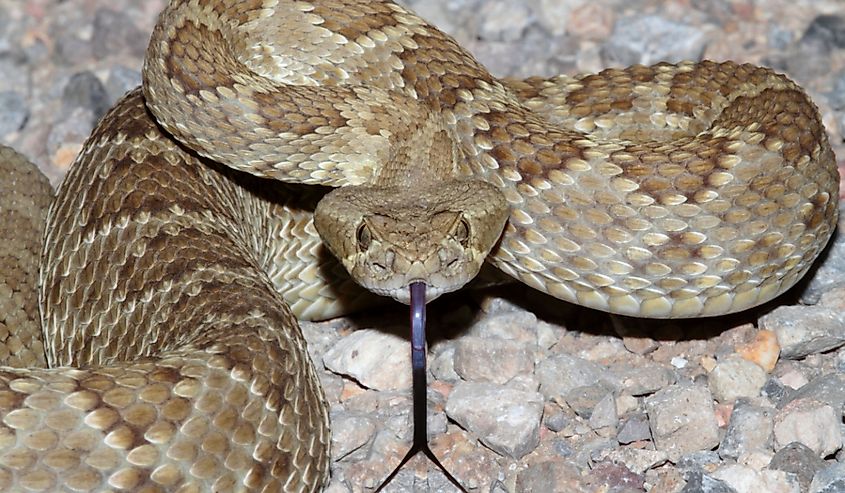
The Mojave rattlesnake (Crotalus scutulatus) is a venomous pit viper that inhabits much of the southwestern United States. Its coloration ranges from yellowish-brown to pale green, making it well-camouflaged in its natural desert habitat. One of the most interesting facts about Mojave rattlesnakes is their ability to climb trees and shrubs in search of prey. This is a unique adaptation that allows them to hunt for birds, lizards, and other small animals that may be out of reach for other snake species. Mojave rattlesnakes also have a distinct buzz that they use when threatened, which serves as a warning to potential predators and unsuspecting hikers. The venom of the Mojave Rattlesnake is a neurotoxin; it affects the nervous system and can cause severe pain, muscle weakness, paralysis, and even death if left untreated.
Sidewinder
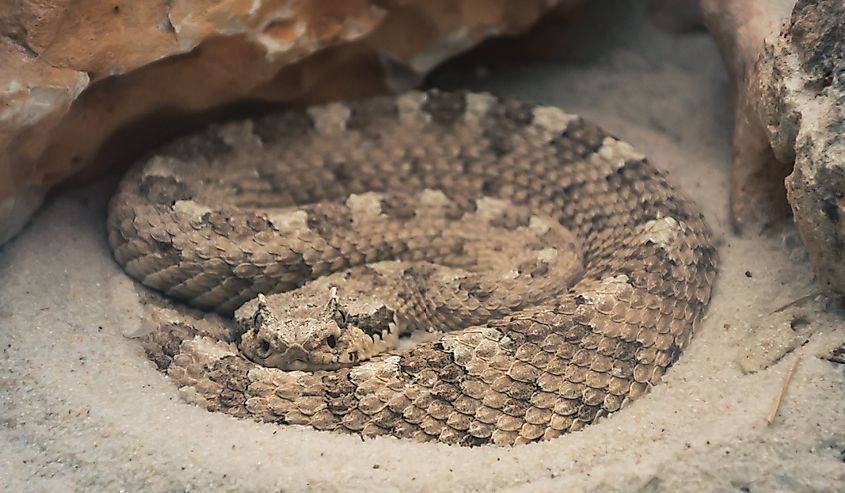
The Sidewinder (Crotalus cerastes) is a small but dangerous species of rattlesnake widespread in desert areas throughout the southwestern United States. The Sidewinder is a small snake, typically growing to about two feet in length. Its coloration ranges from light yellow to grayish-brown with dark brown spots down its back and sides. One of the most distinctive features of this snake is its unique method of movement, where it uses a sideways motion to navigate across the sand. This unique way of movement earned the snake its name, Sidewinder. Sidewinders are relatively elusive and difficult to spot because of their ability to burrow into the sand to escape predators and their tendency to avoid confrontation by freezing when disturbed. Despite its small size, the Sidewinder is a dangerous snake, possessing a powerful venom that can cause severe pain and swelling.
Southwestern Speckled Rattlesnake
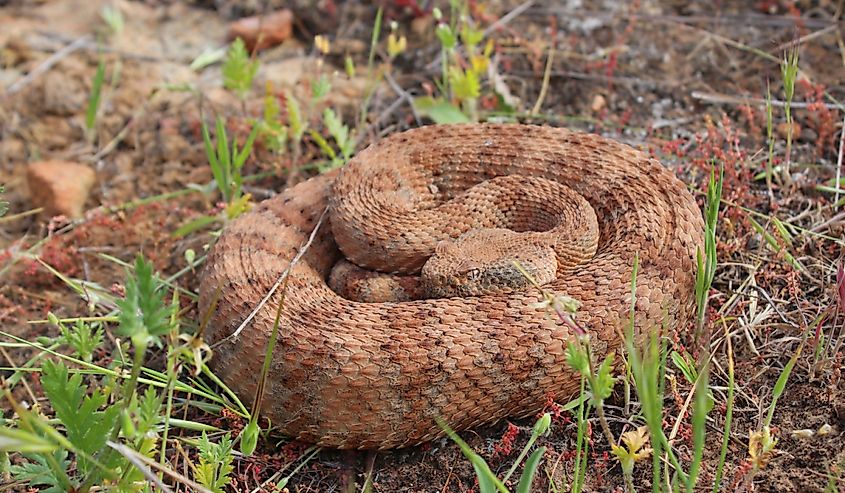
The Southwestern Speckled rattlesnake (Crotalus Pyrrhus) is a medium-sized species of rattlesnake that proliferated throughout much of the southwestern United States. The venomous snake blends in with its surroundings with ease due to its cryptic coloration, which ranges from light gray to yellowish-brown with dark spots along its back and sides. This species is abundant near Lake Mead in rocky canyons, desert washes, and other open areas. The snake communicates with potential mates using its distinctive "tail rattle," which it shakes to signal its presence and warn predators of its venomous nature. The venomous bite of the Southwestern Speckled Rattlesnake can cause serious injury and must be treated immediately.
In Conclusion
Lake Mead is a beautiful and popular destination for outdoor enthusiasts, but it is also home to several venomous snake species that can pose a danger to visitors. By understanding the characteristics and habits of these snakes, visitors can minimize the risk of encountering them and enjoy their time at the lake safely. As temperatures rise due to global warming, these animals may experience changes in their behavior and habitats as well as shifts in prey availability. If these changes are not adequately addressed and managed, there could be serious consequences for the health and well-being of Lake Mead's inhabitants. It is therefore essential that researchers continue to monitor this region closely in order to mitigate the potential adverse impacts of climate change.











